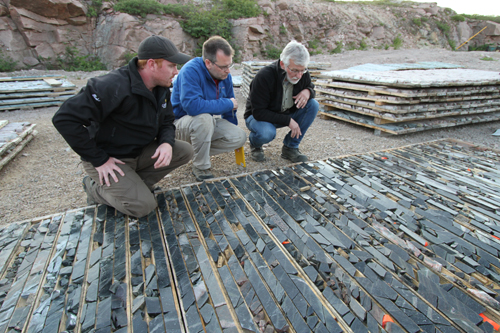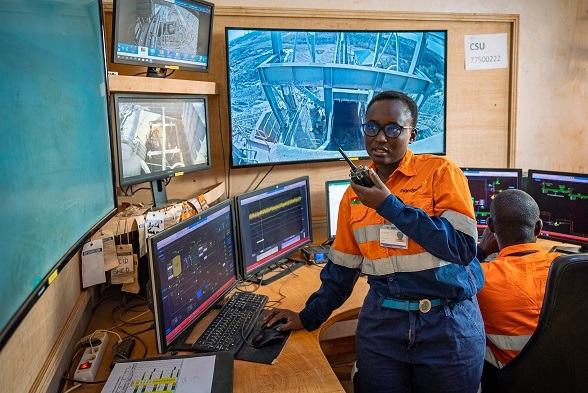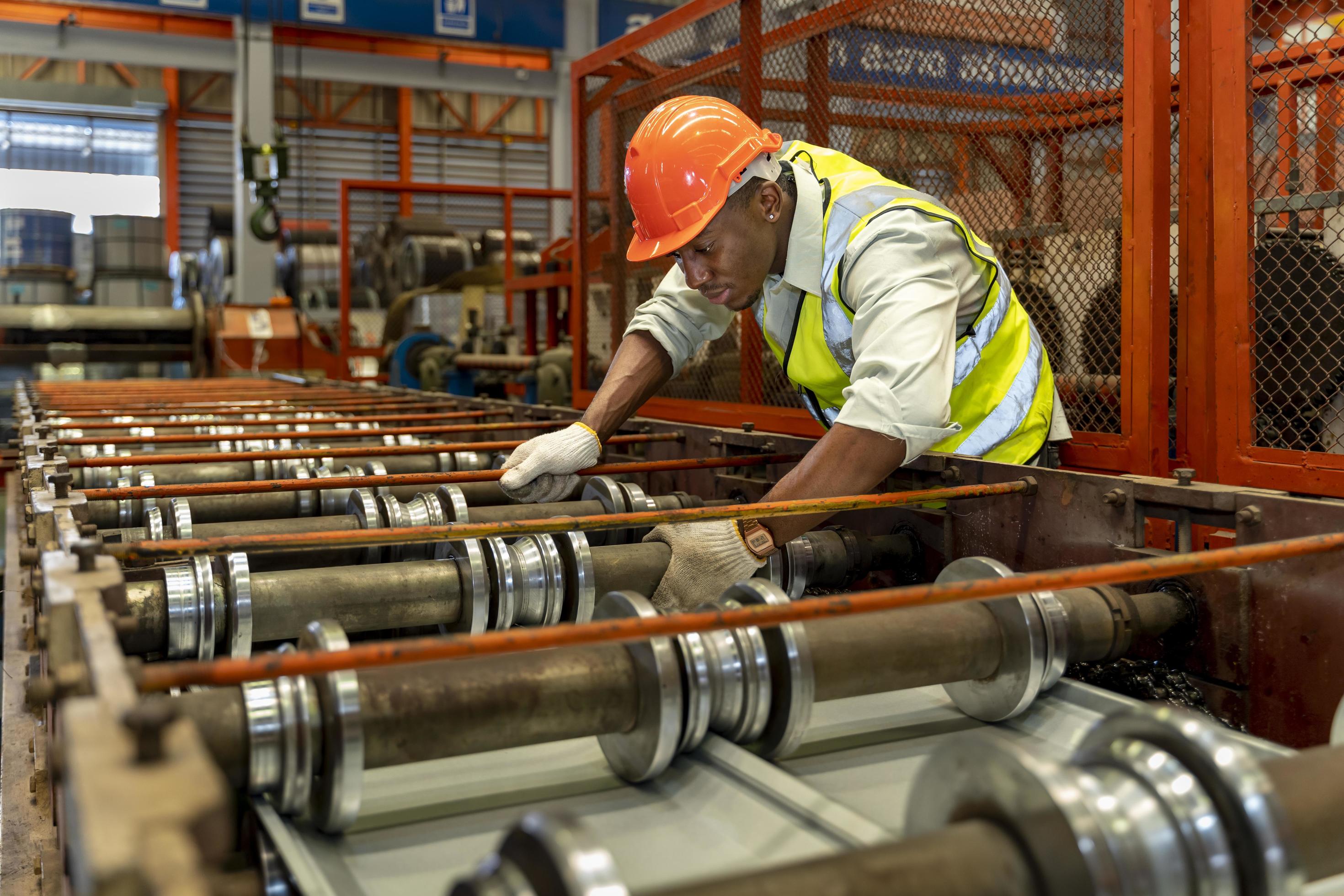
The market has a lot to answer for, and so do investors in search of a quick buck. Where gold mining is concerned, it is a well-known fact that as the price on the international metal exchanges fluctuates the viability of higher cost mines comes into question. There are properties all over the world that have been put into mothballs either because all the high grade material has been taken or because they can’t any longer sustain a decent margin.
In many cases this is not the whole story, however. The President and CEO of Coastal Gold Dr Bill Pearson is a geologist with a stellar track record in exploration, specialising in resurrecting mines that had been thought expired. He explains his apparent instinct for divination as merely a result of 40 years of learning and applying geological principles but what is not in question is that he has done it before. “Over the years I have developed a speciality in taking old and unloved mines and reassessing them giving them a new look and getting them back into production.”
As VP for Exploration at Desert Sun Pearson directed exploration programs that increased the overall resource base at the Jacobina mine in Brazil by 1.4 million ounces of gold and discovered a major new extension to the Canavieras deposit that is now being developed by Yamana - with a projected mine life of 30 years. And for Central Sun he and Peter Tagliamonte discovered new zones at the Santa Pancha mine and at Orosi (now Libertad) in Nicaragua as well as significantly expanding mineral resources in the region of Limon and laying the foundations of what is now a $1.6 billion company. Team building from top to bottom is one of Bill Pearson’s strong points. This summer he welcomed a new chairman to the board of Coastal Gold – Justin Reed is that rare animal, a banker trained as a geologist.
When his company Castillian Resources first looked at the Hope Brook deposit, discovered in 1983 by BP-Selco, and mined from 1987 to 1997 with total production reported to be 752,153 ounces of gold plus a copper concentrate, he felt immediate recognition. Others thought the prospects were too low grade and had no potential because everything significant had been found, but they were wrong. It was a familiar picture, he explains: “It was the technical work that was lacking. It needed proper geological work and engineering work. Once it got into production the geological work took a back seat, and of course this deposit was producing during a very low gold price era.” Any exploration was limited to the immediate area round the mine, but Pearson has since shown that it is remarkably wide open.
Castillian changed its name to Coastal Gold in June this year following a merger with Ridgemont Iron Ore and reflecting the company’s confidence that it can now focus all the energies of its experienced team on Hope Brook, properties outside of Canada have been disposed of. The merger and the $2.7 million funding it released, paved the way to achieving its immediate milestones, a 4,250 metre resource definition diamond drilling programme and competing a preliminary economic assessment (PEA) on Hope Brook. The work is now progressing well with Newfoundland contractor New Valley Drilling, and the support of local communities which make up the bulk of the workforce. Even Dave Copeland the Chief Geologist is a Newfoundlander, though with global experience.
Work is progressing well on all fronts. As well as drilling, further attention is being paid to the old tailings. Preliminary work carried out last year showed recoverable gold at about one gram per tonne – in tailings produced when the old plant was running at maximum efficiency. Metallurgical, geotechnical, environmental and engineering work under technical manager Allan Polk is progressing apace and the results of this work will form a key part of the PEA.
In every way, Newfoundland is a great jurisdiction to work in, and he clearly appreciates the lack of political and regulatory issues compared with many gold mining countries. Power is a case in point. Before he spent $14,000 on a line to link the camp with the grid he was spending $5,000 a week on diesel; now the camp, and eventually the production plant, can enjoy reliable supply for a quarter of that cost. “We have an airstrip, a wharf, existing tailing ponds, a ramp to 350 metres below surface, and we can bring all we need in by boat,” he enthuses. “Newfoundland’s main shipping port, Port aux Basques, is just a 70 kilometre sea journey to the west and the town of Burgeo is only 30 kilometres to the east.” However the greatest advantage Newfoundland offers is its skilled workforce. “The people here are a pleasure to work with: they love working on ‘The Rock’ having worked on forestry, fishing and mining all their lives. They fix things before they are broken!”
The results of the drilling programme will be out by the end of this year and the PEA completed early in 2014. Drilling is currently taking place in two areas known as the Footwall and South West Pit Extension. Next year attention will move to the longer term potential of the property, a large area to the west of the historical mine called the 240 Connector Target. “We won’t be able to drill it in the current program but if we can establish the bridge from the South West Extension into that target the potential expansion is tremendous.”
This is more than just a gut feeling. With significant past production, he feels that there is a lot of misunderstood geology going on. “The key thing is that if you want to find a big mineral deposit you need to get into a big system and that is what I always liked about this project – it is a very big system, also very under explored.”
An important discovery he has made is that some of the old drill holes on which people were assessing the area were simply in the wrong place, or had failed to go deep enough. Drilling and geophysics have identified a major fold structure that closes below surface in the Connector Zone, he says, which explains why shallow historical drilling failed to intersect the gold bearing rock. Understanding these fold structures, he adds, are the key to unlocking the potential of Hope Brook. And Hope Brook is far from being the whole story. “It is part of something much bigger. It is not rocket science to realise that if we have some success here we are looking at a very substantial pit here, all of it open down dip and along strike!”
He also believes that the historical grade analyses are seriously flawed. “I believe historical drilling seriously underestimated the grades because of problems of grinding but also because they were only looking for higher grade material.” In the circumstances prevailing in the 1990s mid-grade and low-grade samples never even got analysed, so they show up as zero in the database. “We are busy filling in gaps in the old drilling, eliminating historical holes we don’t think fit the picture. I am very confident we will see a big increase in grade in the next resource assessment. Naturally we want to expand ounces but right now getting the grade up is our prime focus.”
Coastal gold is a company to watch. It has strong investor support and will attract those investors who believe the gold price will recover going forward. Bill Pearson at any rate is optimistic. “I think now we have weathered the storm over the last 18 months and are ready to take Hope Brook forward – just watch what happens over the next half year!”
Written by John O’Hanlon, research by Marcus Lewis



 CoastalGold-AM-Mining-Dec13-Bro-s.pdf
CoastalGold-AM-Mining-Dec13-Bro-s.pdf









